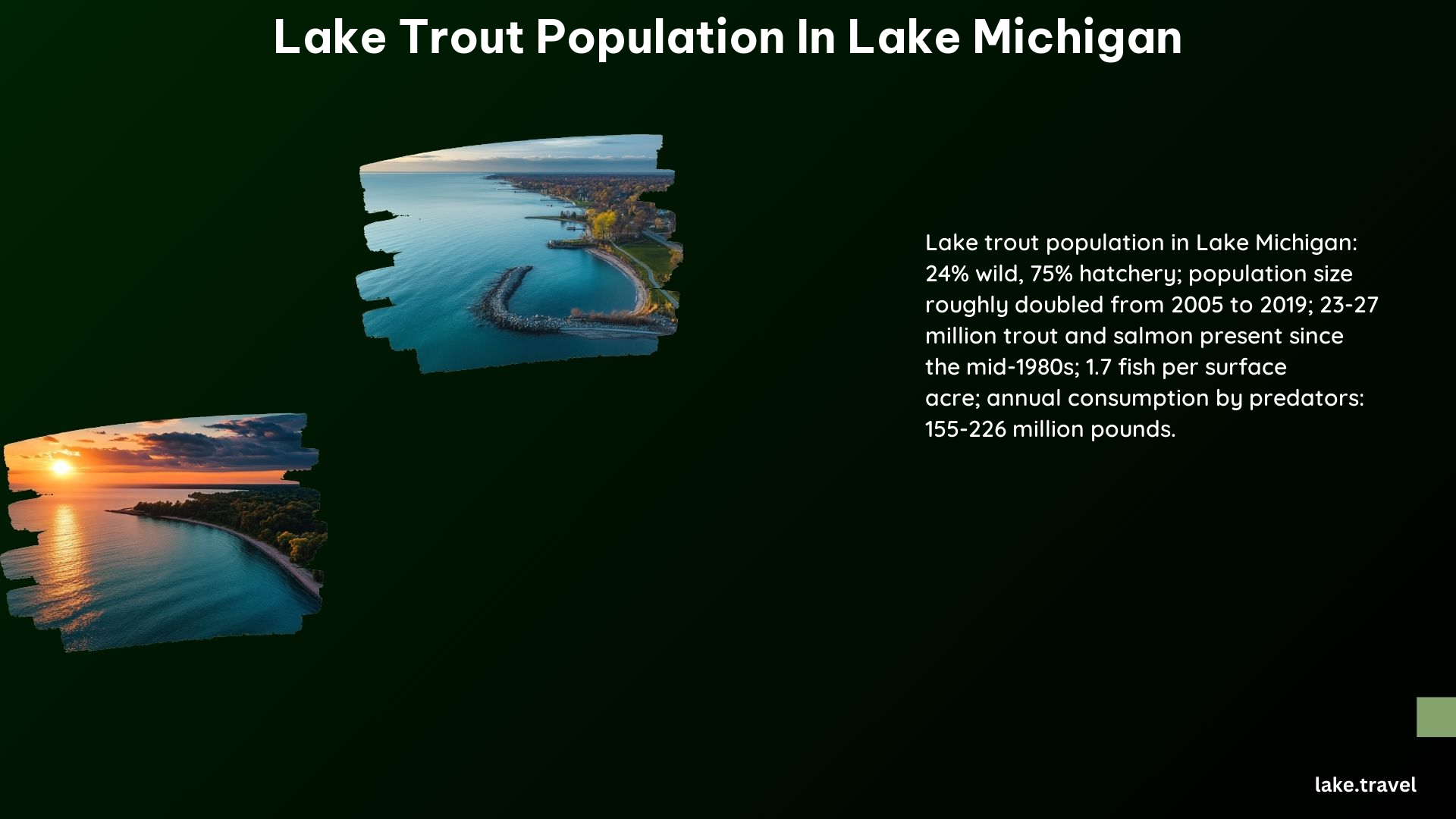The lake trout population in Lake Michigan has faced significant challenges and threats over the years, but conservation efforts have led to a gradual recovery. Understanding the historical decline, current status, and ongoing threats is crucial for ensuring the long-term sustainability of this iconic species.
Historical Decline

In the late 1940s, the commercial fishery for lake trout in Lake Michigan collapsed due to the invasion of the sea lamprey and the failure of natural reproduction. By 1951, the estimated abundance of lake trout in lower Lake Michigan was only about 4% of their pre-invasion levels, and by 1955, the population was near extinction.
Current Status

Despite the historical decline, conservation efforts have led to some recovery. The estimated percentage of wild lake trout in the Lake Michigan lakewide population in 2021 was around 24%. The lake trout population has roughly doubled between 2005 and 2019, with hatchery fish contributing significantly to this growth.
Threats
Sea lampreys remain a major threat to the lake trout population, as they prey on lake trout and can cause significant mortality. Changes in the forage base, such as the introduction of exotic species like the round goby, have also impacted the lake trout’s food supply and habitat.
Conservation Efforts
The U.S. Fish and Wildlife Service has been working to establish a native, self-sustaining population of lake trout through strategic planting of trout fry and management of the forage base. Efforts to control sea lamprey populations and protect lake trout habitats have been ongoing.
Future Outlook
The lake trout population is expected to continue recovering, with adjustments to stocking numbers and management strategies in place to support this recovery. There is also interest in reintroducing native species like herring to Lake Michigan to provide additional forage options for trout and salmon.
Fishing and Tourism
Lake trout are an important species for recreational fishing in Lake Michigan, with many anglers targeting them for their size and fighting ability. The recovery of the lake trout population is expected to support a healthy and sustainable fishery, which can benefit local economies through tourism and recreational activities.
Key Statistics
- The total number of trout and salmon in Lake Michigan has remained relatively stable between 23 and 27 million since the mid-1980s.
- Lake trout can weigh up to 40 pounds, making them a prized catch for anglers.
References
- Eschmeyer, P. H. (1957). The near extinction of lake trout in Lake Michigan. Transactions of the American Fisheries Society, 85(1), 102-119.
- Michigan State University Extension. (2012). How many Salmon and Trout are in Lake Michigan?
- Lake Michigan Lake Trout Working Group. (2021). 2021 Lake Michigan Lake Trout Working Group Report.
- Midwest Outdoors. (n.d.). Lake Trout: The Forgotten ‘Kings’ of Lake Michigan.
- Michigan Department of Natural Resources. (n.d.). Lake trout – State of Michigan.
